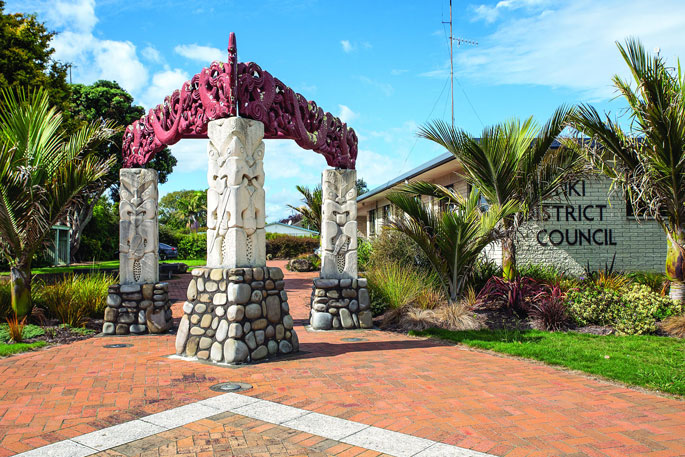It’s a month overdue and shows a budget deficit for the first three years, but Ōpōtiki District Council has got its Long-term Plan for 2024 to 2034 across the line and set rates for the year.
At meeting on Wednesday the council adopted its plan for the next 10 years which will see an average rates increase this financial year of 10.2 percent.
Rates rises in year two of the plan are expected to be 10.6 percent increasing to 16.6 percent in year three.
The plan has been amended following consultation and deliberations and the revised document audited by the Office of the Auditor General appointed auditor.
The audited report was intended to be adopted on September 30 but a report to council by chief executive Stace Lewer gave water services reforms as the main reason for lateness.
The council has found it financially prudent to have an unbalanced budget, which would be in deficit for the first three years of the plan as operating revenues are not sufficient to meet operating expenses.
This was primarily due to the initial operating costs of the harbour being higher than the current ratepayers can afford.
The council would also transition to a “long-run average approach” to the funding of capital renewals, thereby spreading the average expense of renewing assets over the life of the assets rather than focusing on year-by-year costs.
The total rates requirement for the council is $15,923,151 (excluding GST).
Due to the lateness of the setting of rates, these would be payable in two installments. The first installment is due on January 20 and the second on May 20. A penalty of 10 percent will be added for late payments.
Mr Lewer thanked everyone involved in reaching the milestone.
“It’s taken 18 months and numerous workshops, meetings, community engagement activities to help with planning and work through numerous challenges.”
 Ōpōtiki District Council chief executive Stace Lewer said this year's long-term plan had been challenging for a number of reasons.
Ōpōtiki District Council chief executive Stace Lewer said this year's long-term plan had been challenging for a number of reasons.
He said there had been some difficult decisions to make, such as reducing some operating costs.
The challenges had not been unique to the Ōpōtiki council.
“Councils around the country have faced similar challenges and cost pressures such as high inflation, infrastructure needs, changes to central government policies such as three waters and increasing insurance costs have all been common challenges.”
The introduction of the new activity, operation and maintenance of the new harbour had also added cost pressures.
While the council had opted for their preferred options for the plan, he thanked all those who had made submissions for their feedback.
He said the plan “strikes a balance between affordability but also progressing the district”.
Auditor David Walker congratulated staff on what had been a “massive task”.
He also pointed out the difficulties of the changes in government policy had, particularly on such a small team as the Ōpōtiki council had.
“I’ve been involved in every single round of LTPs since they first started and there’s never been one like this. In situations like that it becomes incredibly difficult to foresee the complications that you are going to come across.
“A number of councils underestimated the complexities and the difficulties.”
LDR is local body journalism co-funded by RNZ and NZ On Air.




0 comments
Leave a Comment
You must be logged in to make a comment.